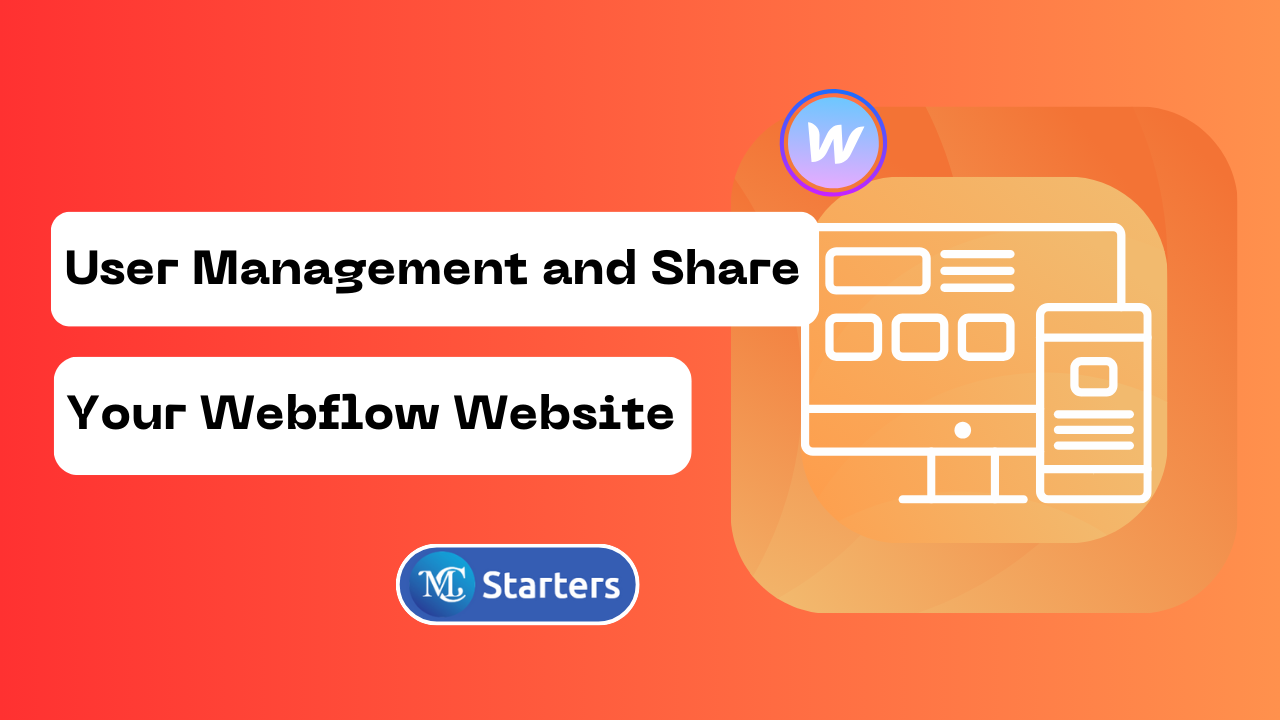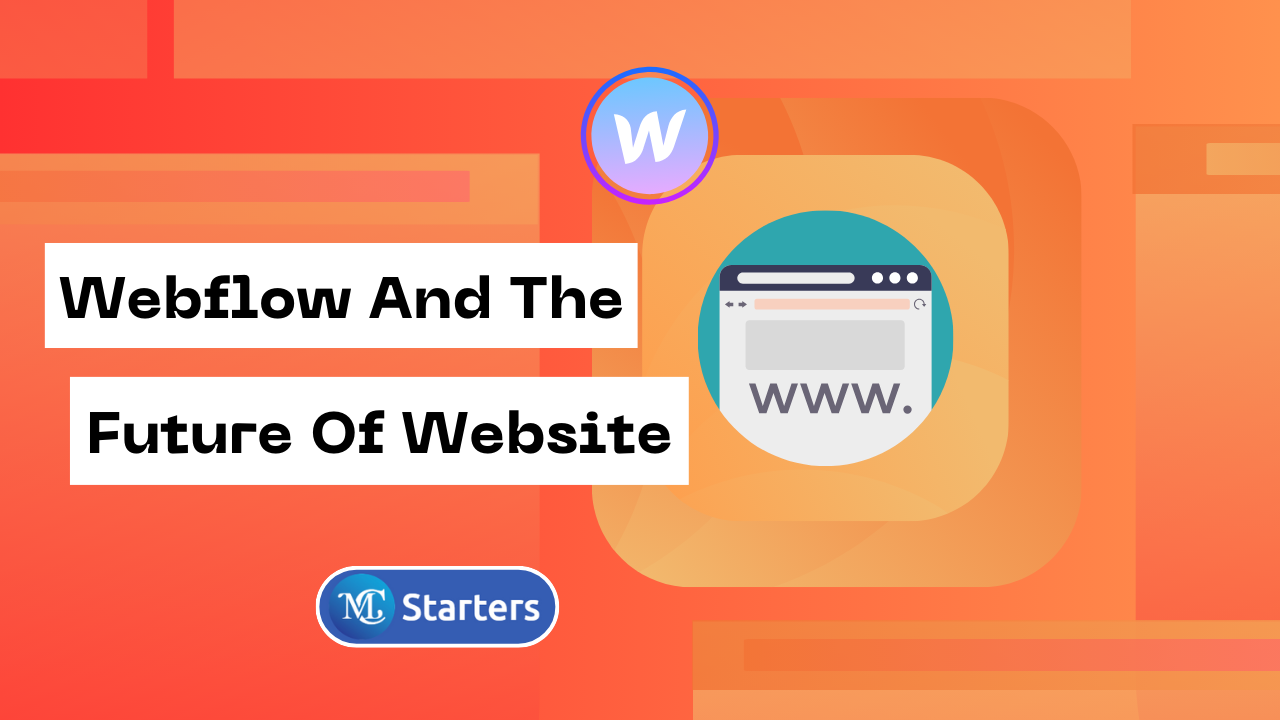What is Webflow Devlink and where did we learn this

If you’re into making websites, you might have heard about Webflow. It’s a cool tool that lets you build websites without having to write code. But you might be scratching your head about something called Webflow Devlink. Let’s clear that up and talk about where you can learn more about it.
What’s Webflow Devlink?
DevLink allows designers to export their components using Webflow’s powerful visual editor to a React application. This means developers can take those components and use them in a separate coding environment from Webflow. They gain access to the capabilities of the React.js platform, enabling them to bring these designs to life with ease.
“webflow Devlink” isn’t a common term in the webflow community. It seems like it could be a new thing or maybe a special part of webflow that’s all about connecting webflow with coding. Since there’s no official feature called “webflow Devlink,” we’ll think of it as the part of webflow where you can use your coding skills to do even more cool stuff.
Unraveling Webflow Devlink
Webflow Devlink might not be a term you’ve encountered before, and that’s because, as of my last update in January 2022, it isn’t a widely recognized term within the webflow community. However, let’s delve into what webflow Devlink could signify, and more importantly, where you can learn the skills associated with it.
The Essence of Webflow Devlink
While “webflow Devlink” isn’t an official term, it hints at the connection between Webflow’s design capabilities and the world of web development. Think of it as a bridge between the intuitive visual design features of webflow and the technical aspects of web development.
How DevLink Works in Webflow
Before we dive into the benefits, let’s understand how to use DevLink in Webflow:
- Beta Version: As of now, webflow Devlink is in its open Beta version. To access it, you’ll need to sign up using your webflow account email address.
- Next.js React Framework: DevLink currently supports the Next.js React framework. If you’re not familiar with React, you can find resources to help you set up your Next.js project.
- Configuration: After setting up your Next.js project, make sure it runs successfully (by running “npm run dev”). Then, follow these steps to connect your webflow project with your local developer environment:
- Start a Webflow project.
- Create components by right-clicking on an element.
- Go to the component menu and click the “Export components” button.
- Copy the
.webflowrc.jsfile from the DevLink window and paste it into your Next.js project’s root directory. - Replace the “[YOUR API TOKEN]” placeholder with your API access token from your site.
- Installation and Syncing: Install the NPM module by running the specified command in your project’s terminal’s root directory. To sync your components to your Next.js project every time you make changes on your webflow canvas, copy the
npx webflow devlink synccommand from the export window and enter it in the terminal’s root directory. - Note on Supported Elements: Not all webflow elements can be exported with DevLink. Elements like Collection Lists, E-commerce elements (Cart, Add to cart, Web Payments, PayPal), Lottie Animations, and Lightbox are not supported.
Benefits of DevLink in Webflow
DevLink brings a host of benefits to the table:
- Enhanced Collaboration: DevLink fosters better communication and collaboration between designers and developers. It enables the creation of production-ready Webflow React components visually, streamlining the process of translating designs into functional code.
- Streamlined Development: Designers can focus on creating and prototyping without worrying about technical implementation, while developers can easily access design files and extract CSS styles and assets, reducing manual coding time.
- Increased Efficiency: Immediate feedback loops between designers and developers mean changes can be made in real time. This boosts productivity and reduces project timelines.
- Reduced Dependency on Coding: DevLink allows users to leverage Webflow’s visual development platform in React projects, eliminating the need for extensive coding. Designers can create UI components, complex interactions, and animations without coding knowledge.
Utilizing DevLink Effectively
To make the most of DevLink, consider these best practices:
- Clear Communication: Establish clear communication channels between designers and developers. Regular feedback sessions ensure everyone stays on the same page.
- Manage Webflow Components: Ensure all design elements are managed in webflow before making changes in your React app.
- Explore New Features: DevLink introduces new features like Slots and Runtime props. These features offer extended capabilities and flexibility in component development.
Where to Learn Webflow Devlink
If you’re intrigued by the possibilities of webflow Devlink, here are some avenues where you can learn more:
1. Webflow University
Webflow’s official learning platform, webflow University, is an invaluable resource. It offers comprehensive tutorials and guides that cover various aspects of Webflow, including any new features like Devlink. This is often the go-to place for the latest updates and insights.
2. Online Courses and Tutorials
Platforms like Udemy, Coursera, and Codecademy often offer courses related to Webflow. These courses may include sections on webflow Devlink, providing structured learning paths and hands-on exercises.
3. Community Engagement
The webflow community is active and supportive. Forums like the webflow Forum, social media groups, and platforms like Reddit can be goldmines of knowledge. You can ask questions, share experiences, and learn from the community’s collective wisdom.
4. YouTube
YouTube hosts numerous webflow experts who share their knowledge through video tutorials. These videos can be beneficial as they provide visual demonstrations of concepts related to webflow Devlink.
5. Documentation and Blogs
Explore Webflow’s official documentation for in-depth information. Additionally, many web development bloggers write about their experiences with Webflow, offering insights, tips, and tricks.
6. Webflow Workshops and Webinars
Webflow often conducts workshops and webinars to educate users about their features. These sessions can provide practical insights into webflow Devlink and related topics.
7. Experiment and Practice
The best way to solidify your understanding of webflow Devlink is to experiment with it. Create small projects, try out different features, and practice integrating webflow with development processes.
What to Expect in the Future of Webflow DevLink
While DevLink is already making waves by bridging the gap between design and development, there are promising developments on the horizon. In this section, we’ll discuss what you can expect in the future of webflow DevLink.
Expanding Compatibility
Currently, webflow DevLink primarily supports the React platform, specifically the Next.js framework. However, webflow has plans to broaden its compatibility. In the coming updates, you can expect to see support for additional frontend frameworks like Vue.js. This expansion will open up DevLink’s capabilities to a broader audience, allowing more developers to harness its potential.
Storybook Integration
Another exciting development in the pipeline is the integration of Storybook with DevLink. Storybook is a popular tool used by developers to build and document UI components in isolation. Once integrated, you’ll have the ability to bring your React components developed with DevLink back into the webflow site seamlessly. This integration will enhance the flexibility of your design and development workflow, making it even more efficient and collaborative.
Bidirectional Communication
Currently, DevLink operates unidirectionally, allowing designers to export components from webflow to React. However, future updates may introduce bidirectional communication. This means that changes made in React can be pushed back to Webflow, ensuring that both design and development teams stay synchronized throughout the project. This feature will further streamline collaboration and reduce the risk of miscommunication.
Advanced Features: Slots and Runtime Props
Webflow DevLink has already introduced advanced features such as Slots and Runtime Props. Slots enable you to nest components inside other components within your React project, enhancing the flexibility of your designs. Runtime Props provide the option to add more intricate properties to your components that webflow doesn’t natively offer, such as custom event handlers. Expect these features to evolve and become even more powerful, enabling you to create dynamic and interactive web experiences.
A Growing Community
With the increasing popularity of DevLink, you can anticipate a growing community of designers and developers who are passionate about pushing the boundaries of what’s possible with this feature. This community will become a valuable resource for learning, sharing best practices, and collaborating on innovative projects.
Web development is a constantly evolving field, and DevLink is no exception. To stay at the forefront of this exciting development, keep an eye on Webflow’s official announcements, updates, and documentation. Engage with the webflow community through forums, social media groups, and webinars to exchange insights and experiences. As DevLink matures, you’ll find a wealth of resources to help you master this powerful tool.
Conclusion
Webflow DevLink is a game-changer in the world of web development, fostering collaboration and driving efficiency. By bridging the gap between designers and developers, it opens up new possibilities for creating interactive and dynamic web experiences.
As DevLink is still relatively new, resources may be limited compared to more established webflow features. Keep an eye on official webflow channels and the broader web development community for updates and additional learning materials as they become available.




